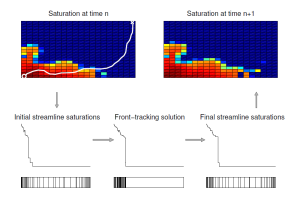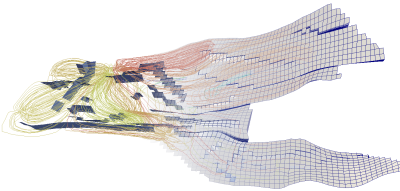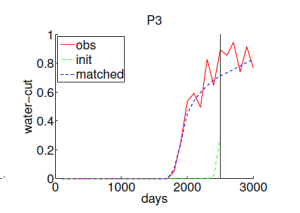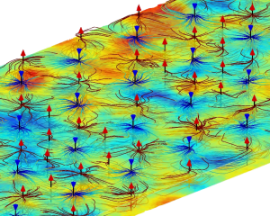GeoScale - Direct Reservoir Simulation on Geocellular Models
|
Streamline Methods
Explicit methods for fast, accurate solution of advection dominated transport equations.
|
|||


 History matching using 2500 days of production data. The last 500 days are predicted based on the history match.
History matching using 2500 days of production data. The last 500 days are predicted based on the history match. History matching 2475 days of water-cut data from the 69 producers, each operating with a constant rate fulfilling the total voidage rate induced by 32 water injectors. The modell contains 1 048 576 active cells and a satisfactory history match was obtained within 17 minutes on a standard PC. Key technologies:travel-time inversion and multiscale pressure solver.
History matching 2475 days of water-cut data from the 69 producers, each operating with a constant rate fulfilling the total voidage rate induced by 32 water injectors. The modell contains 1 048 576 active cells and a satisfactory history match was obtained within 17 minutes on a standard PC. Key technologies:travel-time inversion and multiscale pressure solver.